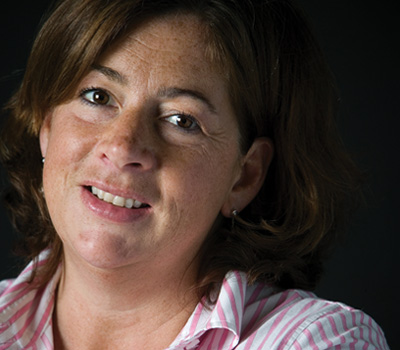

Having tasted every vintage en primeur since ‘82, I’ve noted that Bordeaux did not always live up to the ripe 1982s; many Bordeaux remained too tannic, too green, too unripe—just too old fashioned.
And in the intervening 30 years, Bordeaux’s reputation at times has been a little scuffed around the edges. While Asia buoyed Bordeaux’s fortunes in the new millennium, mature markets such as the US and Great Britain have turned their backs on all but the top wines, bored by the posturing, the prices and the pomposity. Bordeaux has cried wolf too many times, the market claims, vaunting a “vintage of the century” with every year.
The 2012s, however, are worth a serious look. It’s the first vintage in which the stylistic change in Bordeaux has really hit me. As a result of a combination of climate change, more severe selection procedures, later picking and much more rigorous vineyard management, Bordeaux has become softer, riper, richer (more alcoholic) and easier to drink.
The 2012 weather patterns were fairly classical; a cold, dry winter; a cool, wet spring followed by a warm and dry summer. The abundant rain in April, May and June resulted in very uneven flowering across the region, but the summer was glorious and the great weather lasted well into September. At this stage, weather patterns were very similar to 2000 and 2009—two of the most successful recent vintages—but then rains fell again at the end of September and again in mid-October. There was some dilution in the berries and a race against rot, but in the main the grapes had already reached maturity. In fact the rain may have been a godsend, tempering the alcohol levels that have been creeping up in Bordeaux.
And so to the wines: My first culture shock was the 2012 Pétrus—much less of a monk, it was a glossy, perfumed siren, feminine and beguiling, not reserved and ascetic as before. Then came its neighbor, La Fleur, true to its name with the aromatic richness of peonies and violets. The surprises were not limited to Pomerol, arguably the most successful appellation in 2012, thanks to its forgiving gravel soil and a predominance of early-ripening merlot. The Médoc also offers a host of lush, creamy wines, from the beguilingly dark, plummy Palmer to the gorgeous, rich, full and suave Latour (which, sadly, we will not see again for at least a decade or so as director Frédéric Engerer has decided to withdraw his wines from the futures market).
Belair-Monange
Calon Ségur
Cheval Blanc
Domaine de Chevalier (especially the white)
Ducru Beaucaillou
Haut Brion
Latour
La Mission Haut Brion
Margaux
Palmer
Pétrus
Pontet-Canet
Valandraud
In fact, contrary to the pre-tasting buzz that Pomerol and Pessac-Léognan were the star appellations and all the rest were irregular at best, I found lots of wines to like throughout Bordeaux. Even St-Estèphe, arguably one of the least-favored regions in difficult years due to its cool climate, produced one of the stars of the vintage: the glossy, violet-scented Calon Ségur (a triumph for the new owners). My only grouch is that Bordeaux’s two best-known appellations, St-Emilion and Margaux, let down with too many extracted, oaky wines where winemaking attempted to make up for vineyard work. Not so at châteaux Margaux and Palmer, which have begun to work their vines under organic farming, as has Latour, all following the lead of Pontet-Canet, which is entirely run on biodynamic principles. All of those wines are among my top picks of the vintage.
The rains in October prevented much good Sauternes or Barsac from being produced, but the white wines, picked in mid-September, are beautifully balanced and aromatic. In particular, Haut Brion Blanc, Carbonnieux, Domaine de Chevalier and Pavillon Blanc are all pure, fruity and elegant. I found lots of pretty wines in the Côtes and outlying regions of St-Emilion that will offer attractive drinking quite early on. And while the wines from 2012 have soft tannins and relatively low acidities, the total phenolic level is surprisingly high and I suspect that we will be enjoying these wines for at least 20 or 30 years.
As always, no consideration of a Bordeaux vintage is complete without talking prices. In Europe the recession is still very much present with gloom coursing through the Euro zone. There is resistance from the Bordeaux trade to price increases since most houses still have large quantities of unsold 2011s. Even if 2012 is undoubtedly a better vintage than 2011, the expectation is that prices will remain stable, if not decrease in response to economic conditions. Here’s hoping that the 2012 Bordeaux will seduce new wine drinkers to its many charms.
This story was featured in W&S June 2013.
In addition to writing about wine, Master of Wine Fiona Morrison manages the Thienpont family’s négociant business in Etikhove, Belgium and, with her husband, Jacques, manages their three Bordeaux estates—Le Pin in Pomerol, L’If in St-Emilion and L’Hêtre in Castillon.
This story appears in the print issue of June 2013.
Like what you read? Subscribe today.
















